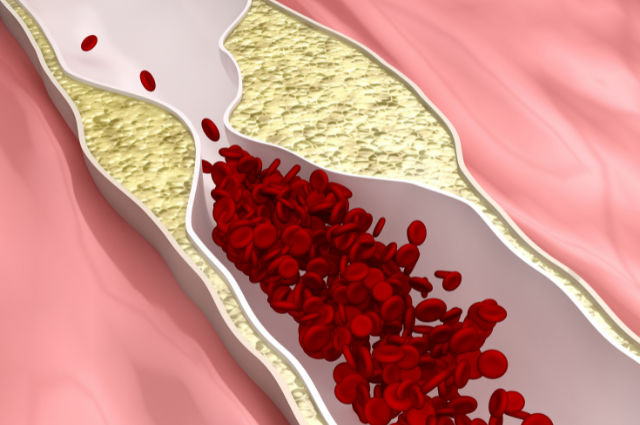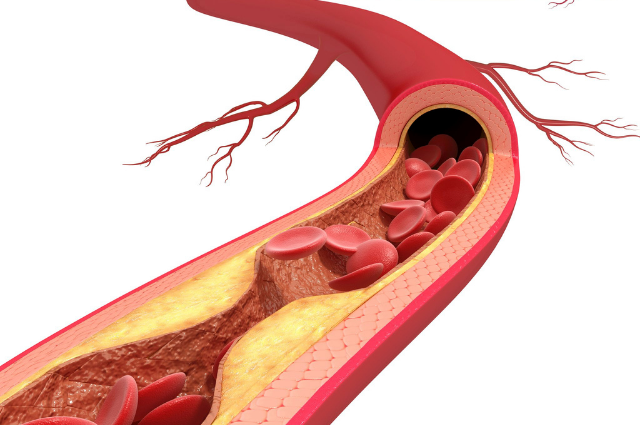What Are the Symptoms of a Blocked Artery in Your Leg?

If you have a history of diabetes or any heart disease and have been suffering from chronic leg pain, you should be more cautious of a disease called Peripheral Artery Disease (PAD), a condition that prevents the blood from flowing smoothly in the legs due to blocked arteries
Peripheral Artery Disease (also known as peripheral arterial disease or PAD) is a common circulatory condition in which your legs have less blood flow to meet your body’s demands.
Blood clots can also block blood flow and cause PAD. If left untreated, the condition can cause severe leg pain (claudication), difficulty walking or standing, and may even lead to limb loss. It is important to know your symptoms and when you should see a doctor.
Keep reading below to know more about the symptoms of arterial blockages (peripheral artery disease).
What is peripheral artery disease (PAD) in the legs?

Peripheral artery disease (PAD) is a type of peripheral vascular disease that refers to the narrowing of or blocking of arteries that results in poor blood circulation in your legs and arms.
The blood vessels called arteries carry oxygenated blood filled with nutrients from all parts of the body to the heart. The arteries that supply blood to the legs and arms are where PAD is found.
Smooth linings are important for healthy arteries. They prevent blood clotting and promote steady blood flow. When plaque builds up inside the walls of the arteries it impedes proper blood circulation.
Plaque is composed of excess fat, cholesterol, and other substances that circulate through the bloodstream. The lump of substances causes the blood not to nourish tissues and organs, which may lead to tissue damage and worse, death.
Each person is different and the rate at which PAD develops will depend on several factors, such as where plaque forms and the condition of your health. It is most common in the legs but it could also be elsewhere on your body, including your stomach, stomach, kidneys, and arms.
[Read: What Is the Difference Between Pad and Pvd?]
What Are the Symptoms of a Blocked Artery in Your Leg?
How do you know if your arteries are blocking?
Patients with peripheral vascular diseases like PAD do not usually have symptoms. Otherwise, they might experience claudication – the feeling of heaviness, fatigue, or cramping of legs when walking or exercising. The pain usually subsides when the physical activity stops.
The severity of claudication differs from individual to individual. Severe cases cause debilitating pain that makes it difficult to walk or participate in any other activities.
Other symptoms of peripheral arterial disease include:
- Numbness and tingling in the feet and lower legs
- Coldness in the feet and lower legs
- Painful cramping in one or both of your hips, thighs, or calf muscles after doing physical activities, such as walking or climbing stairs
- Prolonged soreness on your feet, legs, and toes that don’t heal or are very slow to heal
- Discoloration of legs
- Hair loss on the legs and feet
- Slower growth of toenails
- No pulse or a weak pulse in your legs or feet
- Erectile dysfunction in men
- Pain or cramping in the arms, particularly when knitting, writing, or performing other manual tasks
Peripheral artery disease can cause severe pain that may disrupt your sleep. For medication and treatment, consult a vein specialist immediately.
Causes of Peripheral Arterial Disease
A condition known as atherosclerosis, which is a buildup in plaque (deposits of fat, cholesterol, and calcium) in the arteries, is commonly responsible for peripheral artery disease. This condition can cause narrowing of your arteries, which may reduce blood flow to your legs, and sometimes your arms.
Although the condition is most common in the heart, it can also affect other arteries, such as the limbs.
These are other possible causes for peripheral artery disease, apart from atherosclerosis:
- Blood vessel inflammation
- Injury to your limbs
- Unusual anatomy of your muscles or ligaments
- Radiation exposure
PAD risk factors include:
You have a 1 in 3 chance of developing PAD if you have a medical history of heart disease, according to the National Heart, Lung, and Blood Institute.
Smoking also raises the risk of developing PAD by 4x. Studies have shown that smoking even half a pack of cigarettes a day can increase your risk of developing PAD by between 30-50 percent. Smoking can make PAD worse. In fact, one in two PAD patients who smoke is likely to experience a stroke or heart attack.
Other risk factors for peripheral artery disease include:
- Age of over 50
- Diabetes
- High blood pressure
- High cholesterol level
- Obesity
- History of kidney disease
- Family history of stroke, peripheral artery disease, or heart disease
- High homocysteine level, an amino acid that aids in the creation of protein and building and maintaining tissue.
These factors can damage the artery walls, which could lead to plaque buildup in the blood vessels. Do not dismiss leg and foot pain, numbness, or any other symptoms as normal with aging. Make an appointment with your doctor.
[Read: When to Get Treatment for Blocked Arteries in Legs]
Conditions associated with PAD
Patients with PAD may develop serious health issues if they are not treated.
- Heart attack
- Stroke
- Transient ischemic attack (TIA)
- Renal artery disease or stenosis
- Amputation
- Coronary artery disease
- Critical limb ischemia
How To Determine If You Have A PAD

These are some tests your healthcare provider might perform to diagnose peripheral arterial disease.
- Physical exam. Your doctor will diagnose PAD signs such as high blood pressure, weak pulse, narrowed arteries, or a whooshing sound.
- Ankle-brachial Index (ABI). A test using a regular blood pressure sphygmomanometer and special ultrasound imaging technique to analyze and compare the blood pressure in the ankle and arm, and identify any blocked or narrowed artery.
- Blood tests. The doctor will draw a sample of your blood to check for diabetes signs and measure cholesterol and triglycerides levels.
- Angiography. The doctor will view the blood vessels in your body using an x-ray imaging test to analyze narrow, blocked, enlarged, or malformed blood vessels in different parts of the body, such as the brain, heart, and limbs.
What can doctors do to treat PAD?
Your doctor may recommend some simple steps to relieve symptoms, manage your risk factors, and prevent your PAD from getting worse. These are:
- Lower your cholesterol and blood pressure
- Control blood sugar level if you have diabetes
- Practice a healthy lifestyle through regular exercise and healthy diet
- Maintain a healthy weight
- Avoid or stop smoking
There are also medical treatments that they might require to prevent blood clots and restore blood flow, such as:
- Peripheral Angioplasty and Arterial Stent Placement
- Atherectomy
- Vascular medicine to relieve claudication symptoms, increase blood flow, or prevent blood clots.
- Vascular surgery in severe cases
[Read: How Do You Cure Aching Legs? Answers From 5 Doctors]
When should you see a doctor?
If you’re considered a high-risk person for peripheral artery disease, or if you’re experiencing the symptoms already, it’s best to visit a vascular doctor immediately.
Even if your symptoms aren’t indicative of peripheral artery disease you still need to be tested if:
- You’re above 65 years old
- If you are over 50 years old and have a history of diabetes or smoking,
- If you are under 50 years old and have diabetes or other risk factors for peripheral artery disease, such as obesity, high cholesterol level, and high blood pressure
If you need a medical consultation for peripheral artery disease and other vascular diseases, VISP – Vascular and Interventional Specialists of Prescott is here to help you.
Visit our website to know more about our services, or call us at 928.771.8477 to book an appointment today!
Vascular & Interventional Specialists of Prescott was formed in 2010 by a group of subspecialty radiologists that perform numerous minimally-invasive, low-risk procedures using the tools of our trade for guidance—x-ray, ultrasound, CT scan, and MRI. The team’s goal is to educate patients and medical communities, while also providing safe and compassionate health care, with rapid recovery times and low risk of complications.
